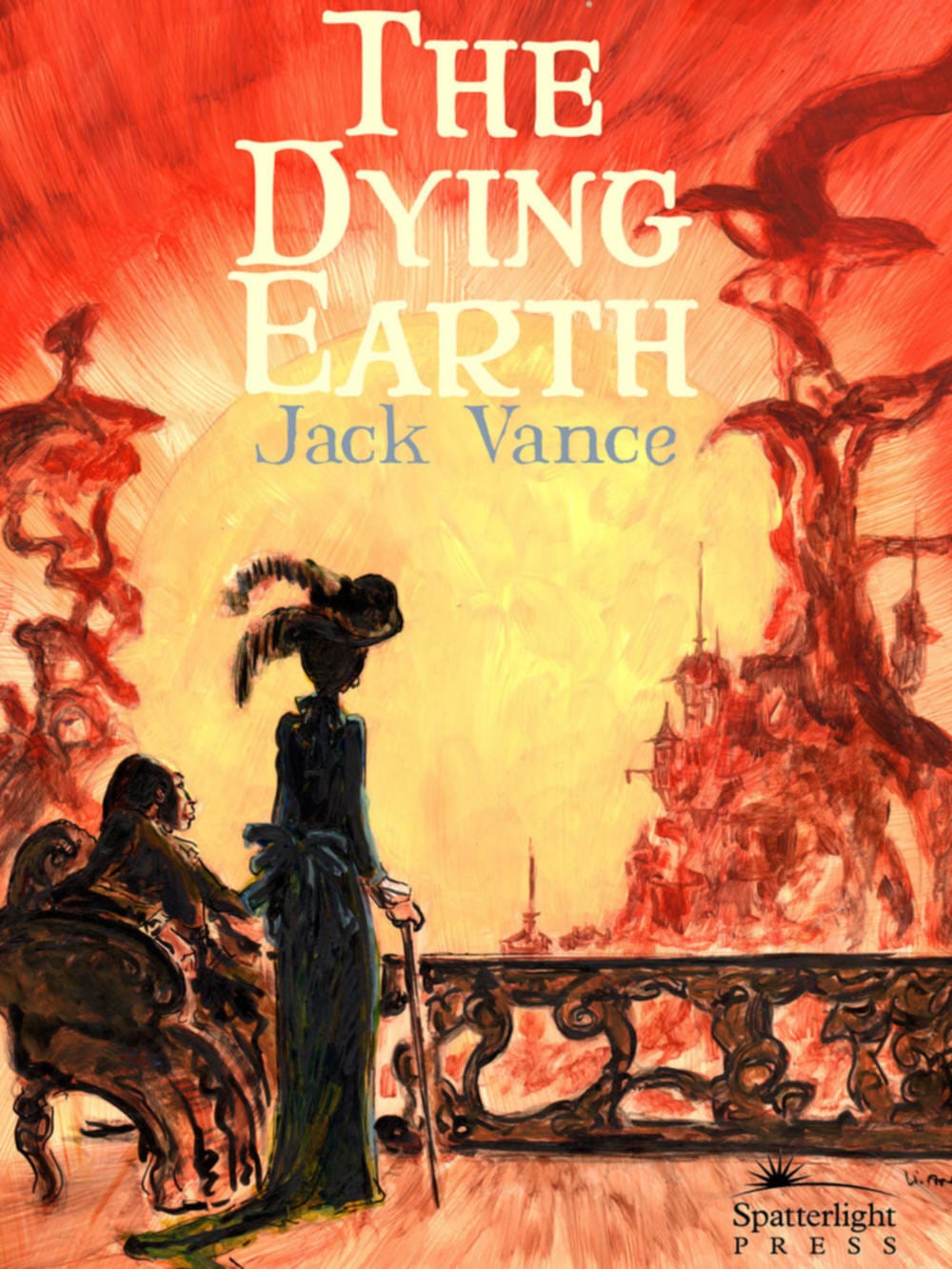The Dying Earth
Maciej Matuszewski reviews Jack Vance’s highly influencial series set far in the future on a dying planet Earth

Though I fancy myself reasonably well read in the field of science fiction and fantasy I must admit that there are quite a few classic authors of the genre whose work I haven’t read at all. Of these the one I probably felt most guilty about not checking out was Jack Vance. After all, he was a Science Fiction and Fantasy Writers of America Grand Master and has been cited as an influence by a number of my favourite writers, including Neil Gaiman and Gene Wolfe. Therefore, having found myself with a little spare time a few months back, I decided to check out one of his most notable works – the epic _Tales of the Dying Earth _series.
A set of four books published between 1950 and 1984, Vance’s Tales of the Dying Earth series is set far in the future, with the sun beginning to grow cold and humanity resigned to its inevitable doom. Over the millennia, science has given way to, or become indistinguishable from, magic. Wizards are a commonplace sight and dangerous fantastical creatures roam the desolate wastes of Earth.
Each book is made up of a number of more or less interconnected stories. In the first book, T_he Dying Earth_, the stories paint a broad picture of Vance’s world. He clearly had an impressive imagination, which is on full show in these stories – the dying Earth is a vibrant yet mysterious place with a unique feel. Vance was also a highly skilled writer technically. His descriptions could almost be called beautiful and, while his characters are often underdeveloped and even clichéd, their dialogue is sparkling with wit. I would stop short of calling it a brilliant work but there is much to commend it.
Unfortunately, however, the sequels do not share the charm of T_he Dying Earth_. The other three books have more of an overarching story but this change, rather than allowing Vance to introduce more depth, works to show off his flaws as a writer. While on a technical level the prose is still above average, the novelty of Vance’s world quickly fades. The plot feels dry, tired and almost painfully repetitive – the second book, Eyes of the Overworld, and third, Cugel’s Saga, in particular have almost the same story.
The failures in characterization are already evident in _The Dying Earth _are enhanced by having to follow the same characters through an entire book rather than just one short story. What is particularly annoying is that almost all of the characters are deeply unlikeable. Vance tries to portray many of them as charming rogues but, without proper character development, their behavior just seems objectionable.
I can see why this series inspired and captured the imagination of so many writers. Vance was certainly an innovator and his work does show a lot of promise. Since Tales of the Dying Earth was published the concept has been executed far better by other works, say Gene Wolfe in his Book of the New Sun. People interested in the history of science fiction and fantasy should certainly check it out but I doubt that it would have much appeal to others.





